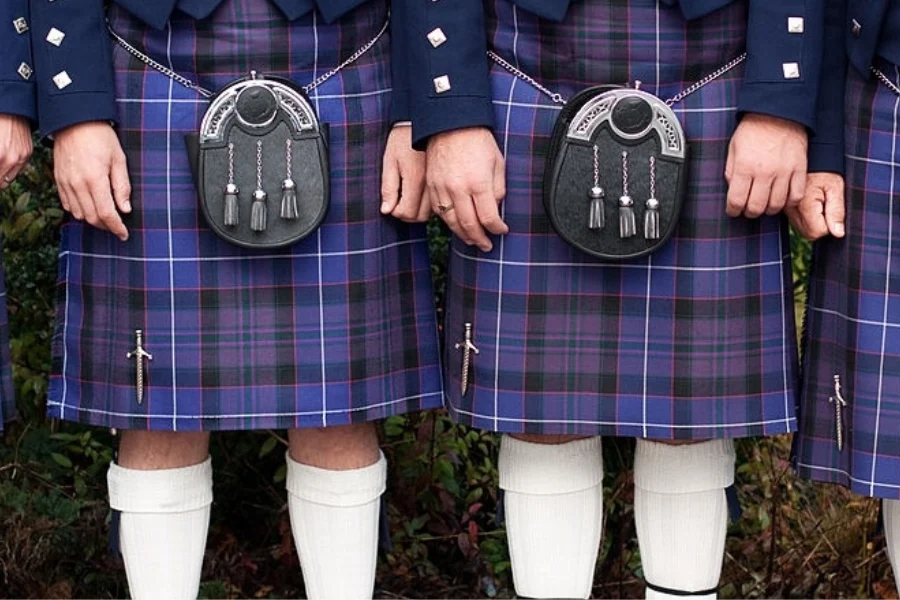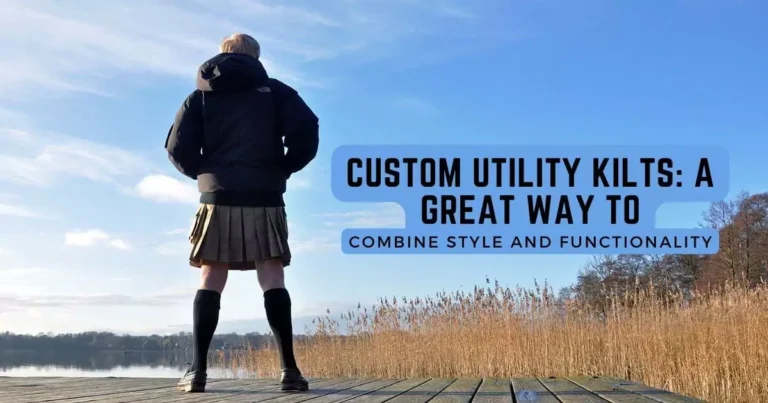Tartan Kilt Buying Guide – Choose The Right Clan or Color
Buying a tartan kilt isn’t something most people do on impulse. Well… maybe some do. But if you’re here, reading this, you’re probably thinking it through a bit more carefully. You’re trying to figure out what kind of tartan suits you—whether that means honoring your heritage, finding something that fits your style, or just making sure you don’t look like you pulled something random off a costume rack.
And really, that makes sense. A kilt, especially a tartan one, isn’t just a piece of clothing. It says something. About your background, maybe. Or your taste. Or just your appreciation for well-structured pleats and a strong fabric that somehow manages to feel both traditional and bold.
That said, choosing the right tartan can feel a little overwhelming at first. There are literally thousands of registered tartans. Some belong to clans, others to regions or military units or even companies. Some are modern, some ancient (in both pattern and tone), and some… well, they’re a bit of a mystery.
Let’s walk through the process. Not like a checklist exactly—more like how someone might talk it through with a friend over coffee.
Start With Heritage (If You Want To)
If your family name has Scottish roots, you may already have a clan tartan associated with it. This is usually the first place people start—and for good reason. Wearing your family’s tartan can feel meaningful. You’re literally wrapping yourself in a pattern that’s been worn by generations before you. Or at least that’s the idea.
But what if your last name doesn’t tie to a clan? Or what if it does but you just… don’t really like the colors? (That happens more often than you’d think.)
That’s okay. Seriously. The rules around who can wear which tartan are more relaxed than some people assume. While it’s respectful to be aware of clan-specific tartans, you won’t be breaking any laws—or even really offending anyone—by choosing one that simply resonates with you.
There are also universal tartans—Black Watch, for example—that are worn by many regardless of lineage. These have their own history, and they tend to be subtle, even a bit mysterious. They’re kind of the “little black dress” of kilts. Classic. Versatile. Timeless.
So if you’re drawn to a pattern, trust that instinct. Heritage is a great guide—but not the only one.
Think About Color (More Than You Think)
Here’s where things get a bit more personal. The color of your tartan kilt will dictate a lot—how formal it looks, how versatile it is, how well it fits into your wardrobe, and yes, whether it matches your skin tone or favorite shirt.
Some tartans are loud—reds, oranges, bold contrasts. Others are muted, earthy, more subdued. There are modern tartans that use lighter greys and greens, and traditional ones that stick with deep navy and forest tones.
Do you want your kilt to be the centerpiece of your outfit? Or just part of a cohesive look?
I’ve seen someone wear a muted grey tartan with a black turtleneck and boots, and it looked effortlessly sharp. Not flashy, but definitely not boring. On the other hand, bright tartans can be joyful. They make a statement. Just be honest with yourself about how often you’d wear something so bold.
Also, consider what events you’re buying it for. Some people want something for casual wear, others for weddings, or Highland games, or even corporate events. That influences the choice more than you’d expect.
It’s a bit like buying a suit. You could go with something daring and different, but will it work beyond one occasion?
Off-The-Rack vs. Custom Tartan Kilts
You’ll find plenty of tartan kilts for sale online. Some are mass-produced, others are handmade. And while off-the-rack kilts can be surprisingly decent (and more budget-friendly), there’s something to be said for getting one made just for you.
Custom tartan kilts allow you to choose everything—from the tartan pattern to the length, pleat style, waist size, and more. If you’re taller, shorter, broader, or just picky about fit (and hey, no shame in that), custom is usually worth it.
That said, it takes longer. It costs more. And you’ll need to know your measurements, not just your pant size. If you’re not sure, most kilt makers offer a measuring guide. Still, it’s something to think about. A kilt that fits well feels entirely different—less like a costume, more like real clothing.
The weight of the fabric also matters. Heavier kilts hang differently, more traditionally. But lighter kilts are easier to wear for long periods or warmer weather. There’s no universal right choice here—just what feels right for how and where you plan to wear it.
Matching (or Not) With Accessories:
Okay, brief tangent here. Because once you pick your tartan, you may find yourself falling down the rabbit hole of accessories: sporrans, hose, flashes, jackets, brooches, pins… it’s a lot.
It’s tempting to match everything perfectly. Maybe too tempting. But a little mismatch can actually make the outfit feel more lived-in. More personal. You don’t have to wear a jacket that pulls the exact same green as your tartan. A neutral Argyll or even a dark cardigan can work beautifully.
Same goes for sporrans. Leather for casual wear, fur or embossed for formal. And don’t feel like you need every single piece at once. Build your outfit over time. Add pieces as they make sense.
Sometimes, just a great tartan kilt, a plain shirt, and confident posture are enough.
Are Kilts Just For Men?
It’s worth addressing—because while there’s a lot of content out there focused on kilts for men, the truth is, kilts aren’t limited by gender. They never really have been. But traditionally, yes, most marketing and production focus on men’s kilts.
If you’re buying for a man, you’ll have lots of sizing and styling options—traditional cuts, hybrid designs, even tactical versions. But if you’re not? Look for brands that offer gender-neutral sizing or custom fits.
And no matter your gender, the same rules (or rather, non-rules) apply: choose a tartan that speaks to you. Pick a fit that feels comfortable. And wear it how you want to wear it.
Final Thoughts (That Don’t Tie It All Up Perfectly)
So, what tartan should you buy?
There’s no formula. No flowchart that’ll spit out a perfect answer. But maybe that’s part of what makes owning a tartan kilt meaningful. You choose. You consider tradition, then maybe you ignore it. You balance style and symbolism, maybe favoring one more than the other.
And honestly? You’ll probably second-guess it. At least once. Until it arrives, you try it on, and it suddenly makes sense. Or mostly makes sense. Maybe you wish you’d gone an inch longer. Or that the green was just a shade darker. But you’ll adjust. You’ll wear it. You’ll figure it out.
And maybe—just maybe—it becomes part of your story from then on.











